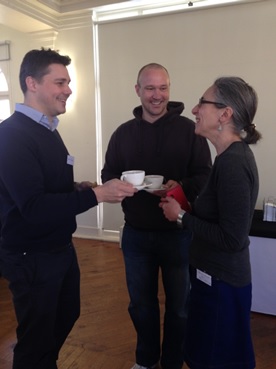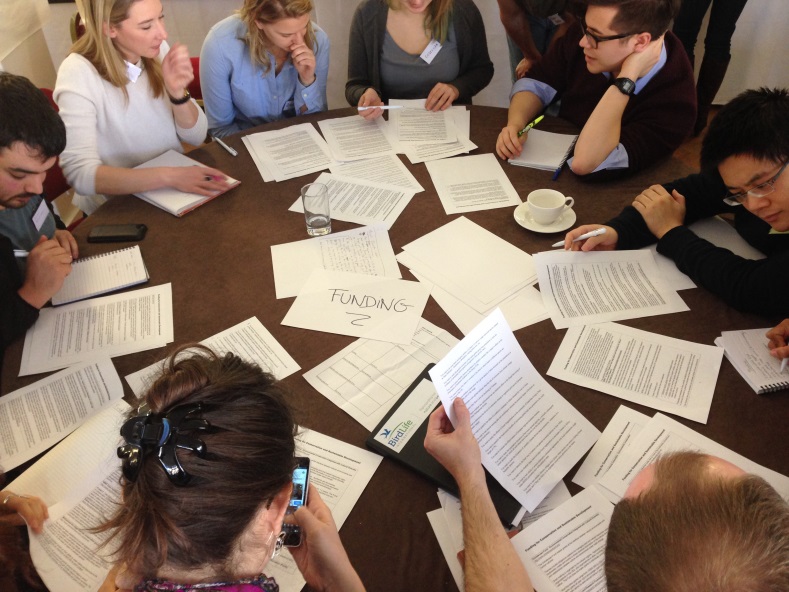How to write a grant application
To contribute successfully to biodiversity conservation, you will almost certainly have to get money from somewhere. Your salary, your research assistants, your equipment, any engagement with stakeholders and ultimately the conservation of your focal habitat or species are likely to depend on you getting funding. An essential part of the day was therefore the workshop focussed on the challenge of convincing a funder to back your plans.
The funding workshop was run by Colin Beale (University of York) and Jon Bielby (Zoological Society of London), providing their hints and tips for how to put together a successful bid. First, there is the challenge of identifying the right pot of money to go for. The conservation specialist interest group committee from the British Ecological Society (BES) provided a shortlist of potential funding for conservation action and associated research to the participants, which compiled various lists found on the web (such as this one, this one and this one). However, this shortlist was still over eleven pages long and covered a vast range of different options.

So, which one to go for? Each participant chose a project or selected one from the list of suggestions, and then hunted out a potential funder. The shortlist of funders revealed pots of money we hadn’t heard of before, that could very possibly be useful in the future – very handy knowledge to take away.
Trying to match up projects to funders prompted important questions: How can I find out what this money has previously gone to? Can I submit an informal enquiry before my submission? Can I email previous applicants or the funders to ask for successful applications? Do they tend to focus on particular types of project even if this is not mentioned in the criteria? The group discussion provided some helpful answers. For example, yes, it is certainly worth emailing applicants that previously received funding – they may share the secrets of their success, and you have nothing to lose if they don’t.
Once a promising source of cash is identified, the second challenge is writing the application. Although the session was only one hour, Colin and John had everyone choose a project, refine the key selling points, think through the methods and then write a funding application in small teams. For which funder? Well, the BES of course!
Each team wrote an application for a BES small grant (£5000 – £20,000) in record time. The main focus was on the title, the lay persons’ summary and the project description. The word limit for all of these sections is short, only a couple of hundred words, and splitting up the sections made for fun team work. The time pressure also made it easier to focus on the most important, most attractive components of the project. My team wrote a great plan for testing whether a cull of invasive rats would benefit the fictional lesser spotted squivlet!

Back in a big group, we looked through a successful application (not about the squivlet) and having just tried to create one, the pros and cons of that application stood out really clearly. The project description was really short and general, but very clearly written. The methods were laid out in clear steps and could be understood easily by non-specialists. The outcomes would be exciting and important for science.
Overall, the session was engaging, fast-paced and very interactive. Colin and Jon walked around throughout the session to answer questions and provide specific insights. The group discussions offered a chance for everyone to raise their concerns and share their thoughts, and, in general everyone left feeling a little less daunted by the challenge of getting new funding.
Some of the tips discussed during the session have been captured by others: interesting links include this highly retweeted post by Conservationbytes, this post by the Guardian, and the tips shared by the ESRC.
This blog is part of a series of posts from the BES/ZSL Conservation Careers Workshop. Find out more
Like what we stand for?
Support our mission and help develop the next generation of ecologists by donating to the British Ecological Society.